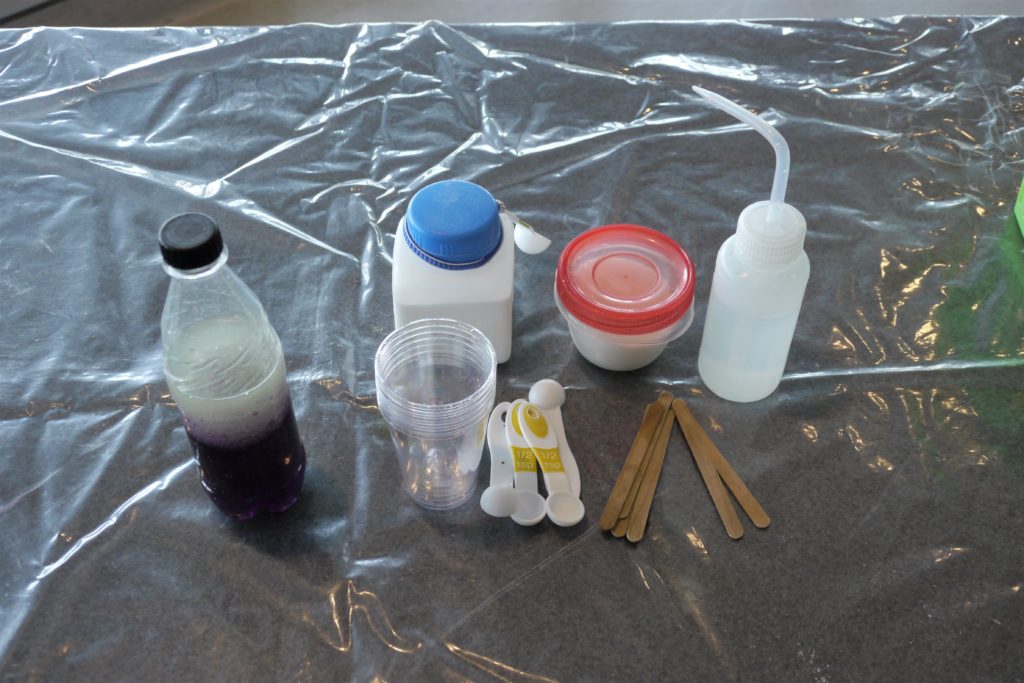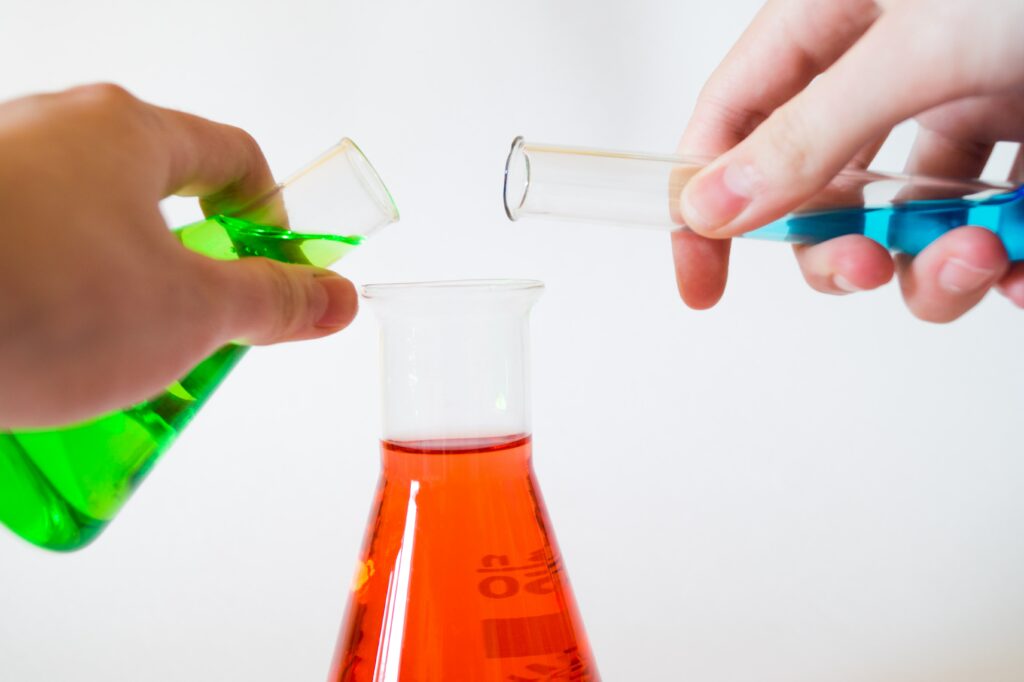Students see a powder absorb water to make something that looks like snow. This is a "magic trick" and is meant to engage students. It works best with lots of enthusiasm!
Students see a powder absorb water to make something that looks like snow. This powder is a synthetic polymer with super water-absorbing properties. In fact, the volume of the powder can increase one hundred times because of this absorption. The powder is another form of sodium polyacrylate and is a close relative of slush powder, which is used in disposable diapers.
The powder, made of sodium polyacrylate, is a polymer, Polymers are large molecules made of repeating units. Slush powder gets its name from its ability to store water as a slushy matrix, and is used in diapers and "Instant Snow". Sodium polyacrylate is a non-toxic chemical, also known commercially as SapGel or Waterlock.
Slush powder polymer's long chains of acrylic acid subunits cage sodium atoms within them. On the "inside" of the molecule there is a high concentration of sodium compared to the low concentration of sodium on the "outside" of the molecule. As a result, when you add water, surrounding the polymers, with positively charged hydrogen ions in the water, the sodium ions are free to go on the move and the tightly organised polymer chains begin to unravel. Water moves into the spaces between polymers and a stiff swollen gel forms.
As water moves in and sodium moves out, in order to reduce the concentration imbalance: a process called osmosis. Osmosis is the spontaneous movement of water into an area of high solute concentration from low concentration.
Due to osmosis, more and more water is pulled into the molecule until the ratio of sodium atoms to water molecules is so small that the amount of sodium on the "inside" of the molecule is negligible. Water movement via osmosis stops when the ratio of water and sodium inside and outside the polymer is equal. It takes a lot of water to do this — that is why sodium polyacrylate is advertised to absorb up to 1000 times its own weight of water. This influx of water makes the polymer swell and take up more space.

